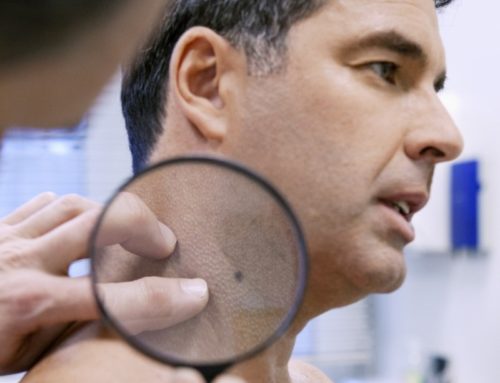5 Points to Ponder about Melanoma
February is Cancer Prevention Month, and skin cancer is both the most common and most preventable type of cancer. We spoke with our surgical oncologist specializing in melanoma, Dr. Alvaro Valle, MD, FACS, about some important issues to consider when it comes to skin cancer.
While not all types of skin cancer – melanoma in particular – can be avoided, there are things you can do to protect yourself. Hint, hint – sun protection is key! Dr. Valle shares the most important signs of melanoma to watch out for, effective treatment options, and insights into this surprisingly complicated disease.

1. Not all melanomas look the same. Melanoma is the most serious kind of skin cancer, and it develops in the cells that produce melanin, or the pigment that colors a person’s skin. Identifying a potential skin cancer isn’t easy, making it even more important to have any skin changes evaluated by a dermatologist early, when there’s a greater likelihood of effective treatment.
“Many people have heard of the ABCDE melanoma assessment model, which describes the characteristics of skin damage that doctors look for when evaluating and diagnosing suspicious skin lesions. It’s a good start because it gives people a framework to evaluate changes in their skin,” says Dr. Valle. “However it can be slightly misleading because it’s often assumed that all the features described must be present for it to be a melanoma. In reality, variations aren’t always obvious, and a new or changing lesion warrants further evaluation.”

2. A mole might not just be a mole. Just because you’ve had a mole or birthmark your entire life does not mean that it can’t change or become dangerous. Any kind of skin lesion is a tumor – many are benign (non-cancerous) or pre-malignant (not yet cancerous), but they are still tumors with the potential to develop into cancer.
“While moles and birthmarks often remain stable for years, sometimes they change because of factors beyond a person’s control – like their genetics, environmental factors, hormones or a combination of factors,” says Dr. Valle. “I tell everyone and especially people with a large number of moles to take advantage of the technology in your pocket and take routine skin selfies to monitor skin lesions over time. This time stamp can be very helpful to dermatologists who can evaluate how these lesions have changed and make decisions about which lesions to biopsy.”
3. You can’t completely avoid melanoma, but you can reduce your risk. Melanomas can occur anywhere on the body, and often show up on a person’s back, face, arms and legs. Dr. Valle notes that some melanoma lesions can also occur in non-sun exposed areas like the bottoms of the feet, the lower abdomen or under the fingernails. The best prevention is to limit exposure to the sun’s UVA and UVB rays – think wearing SPF daily on your face and any exposed areas, wearing hats, sunglasses and protective clothing, and staying out of the sun during the middle of the day (from about 10 am to 3 pm) when the sun is at its hottest.
4. An annual checkup from your dermatologist is essential. Seeing your dermatologist will help ensure you catch any suspected issues early. Schedule these visits annually and immediately report any skin changes between visits. If your dermatologist finds an abnormal or suspicious mole during a skin cancer screening exam, they may recommend it be removed. According to Dr. Valle, removal of pre-cancerous moles is one of the best ways to prevent melanoma.
5. Surgical expertise is needed for effective treatment. The mainstay of melanoma treatment is surgical removal of the skin cancer – it’s the gold standard. However, when melanoma has spread beyond the primary site, surgery followed by immunotherapy may be necessary to effectively treat the disease.
“I’ve seen a lot of melanomas over the last 35 years, and this is important because it’s a challenging disease with multiple clinical presentations. Expertise matters when tailoring the appropriate surgical procedure and modality, especially when working with other members of the cancer treatment team,” Dr. Valle explains. “Melanoma is complicated because it can potentially metastasize or spread to every part of the body. Choosing a surgeon who understands the unpredictable behavior of melanoma can increase the likelihood of a successful outcome.”
For more information or to schedule an evaluation with Dr. Valle at University Surgical Associates, call (423) 267-0466.







I appreciate you bringing up the fact that melanomas can develop anywhere on the body. As you indicated, the best prevention would be to wear sunscreen to reduce exposure to the sun’s UVA and UVB radiation. Since my sister spends a lot of time outside, I’ll make sure to pass this information along to her and advise her to periodically get checked for melanoma just to be safe. I appreciate you sharing!